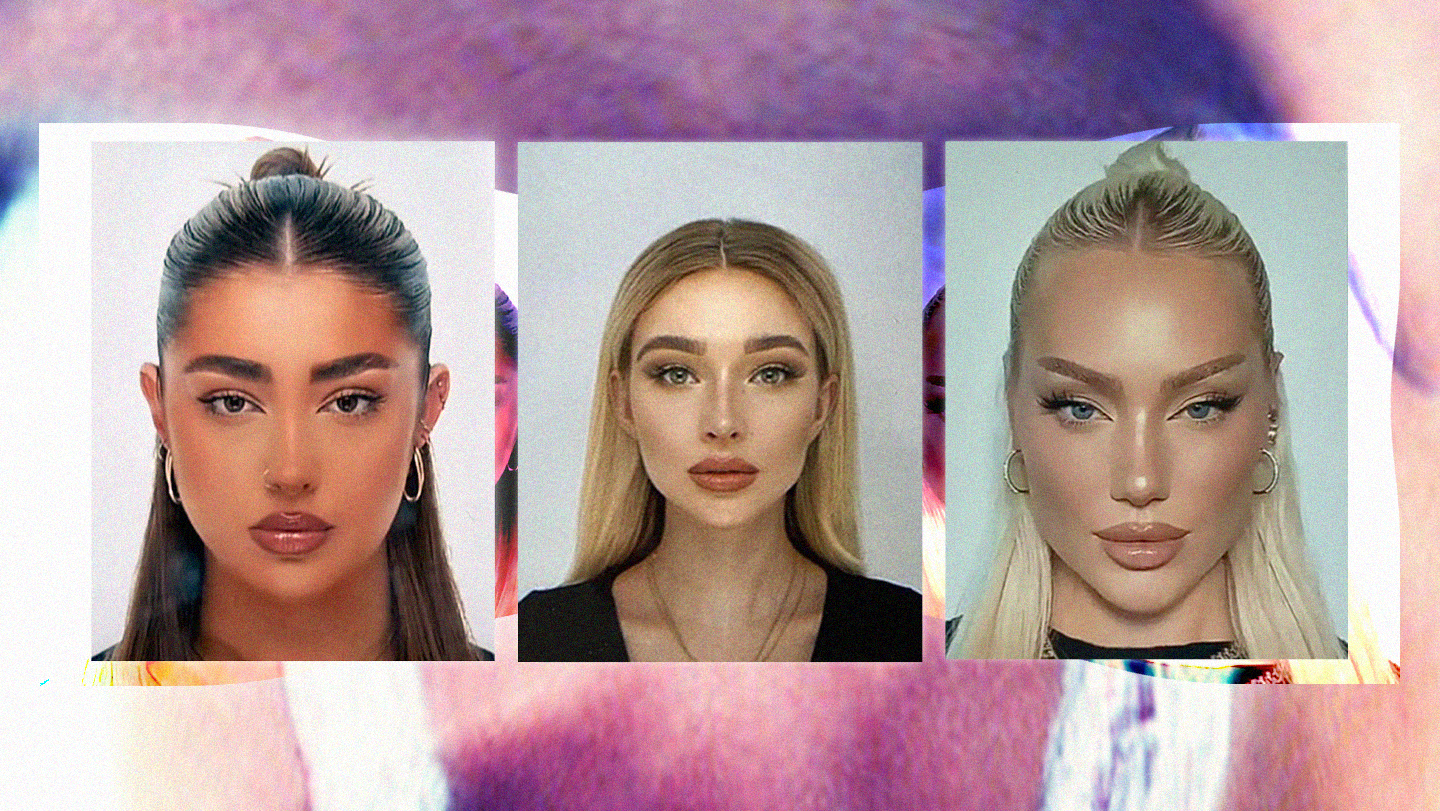In 2014, Kim Kardashian posted an image of her face that sparked a seismic change in the beauty industry. Streaked with makeup in varying tones, Kim wrote: “Wanna see how @scottbarnes68 contours?!”, showcasing the inner-workings of a technique designed to exaggerate the natural shape of one’s face. Favoured by drag queens, with roots as far back as Elizabethan England, contouring creates chiseled cheekbones, a pinched nose, and highlighted accents, with a full-coverage matte finish. The Kardashian’s embrace of this maximalist look on Instagram propelled contouring to vast new heights, ushering in a new era of mainstream beauty (and setting the scene for the launch of various Kardashian beauty lines).
Nearly a decade after that contour selfie, the similarly capitalistic, pseudo-minimalist ‘clean girl aesthetic’ seemingly has millions in a chokehold. Framed as the anthesis of contouring, the clean girl beauty look favours simplicity and a natural approach to makeup. But TikTok’s ‘passport makeup trend’ is a reminder that very little has changed.
What is passport makeup?
So, what is passport makeup? Put simply, its makeup intended to make you look as hot as possible in a setting where you’d normally look not your best (a passport photo booth). Embracing the heavy contouring techniques we were all too familiar with in the 2010s, the look relies significantly on its base layers. The look is heavy: dark, arched eyebrows, carved out cheekbones, a chiselled nose, over-lined and over-glossed lips, heavy concealer under the eyes, hair slicked back and away from the face. Baking is often involved (“the act of applying a setting or translucent powder to areas of the face that tend to crease over time”). Often, a fox-eye eyeliner to finishes the look. Essentially, you want it thick enough that, while it might make you look odd in a harsh natural light, it’s just right for the low quality of the photo booth camera.
The hashtag #passportmakeup has accumulated 100M views at the time of writing, with TikTokers recreating this look in an attempt to achieve a passport portrait with similarly artful qualities. Take, for example, beauty influencer Georgia Barratt. Millions of those views belong to a video in which she takes viewers on a trip to her local supermarket to capture a new image for her passport. The accompanying makeup tutorial video sits at nearly 12M views, with one user commenting that Georgia’s photo “sort of looks like a painting”.
Favouring a full-coverage effect with heavy contour and highlighting, Georgia says she wanted to look “as lifted as possible” with a “flawless finish”, guiding the viewers to recreate an optical style that aims for facial symmetry, carved-out brows, and angular features. The resulting look is reminiscent of what Jia Tolentino coined “Instagram Face” in a 2019 New Yorker article; the emergence of a single cyborgian face and collective propensity for visual congruence that was seeping into beauty culture at the time. Jia observed that “technology is rewriting our bodies to correspond to its own interests”. And that was even before TikTok.
The passport photo trend
Although technology means we move faster than ever, the passport photo trend is interesting in that the result will sit with us for a long time by definition (at least 10 years, the standard passport issue term). It will, in that sense, be as definitive as Kim’s contour selfie was a decade before. And, as with Kim’s selfie, the passport trend’s dissemination and mass adoption on TikTok also helps to communicate standards of female aesthetic perfection, even more so than clean girl tutorials could ever hope for — because it is a performance of beauty and gender that we’ll carry with us in our real lives, or at least in our wallets.
When specifically considering passport photos, it could be argued that the privacy of the photo booth provides the individual with the freedom to perform. Of course, there’s a heavy amount of irony involved in the performance of the passport makeup trend. Passport photos exist, after all, to show our true likeness; to provide confirmation of the identity of the person they portray. Some who participated in the trend have even alleged they’ve being stopped by passport control when travelling, because they look so unlike the portrait they created with the help of TikTok.
If the passport photo trend reveals anything, it’s that despite a general move towards ‘casual Instagram’ among Gen Z photo-dump enthusiasts, the pursuit of perfection still prevails. The very act of using a photo booth, of taking such a direct image of ourselves stands in stark contrast with the effortlessly detached look currently performed across social media spaces.
In that respect, the passport makeup trend isn’t anything new, it’s as tried and tested as Kim’s heavily contoured selfie. It’s a continuation of that, in fact. In many ways, the look itself serves as an aesthetic representation of the spirit of our times; where beauty intersects with social media, identity and performance. Ultimately, no matter how much we attempt to convey effortlessness, many will always be tempted to forgo the facade in favour of full indulgence, where we are free to beautify ourselves without the contrived guise of spontaneity.


